
Taking a considered approach to the sport and building a strong mindset can help climbers continue to improve in their 40s, 50s, and beyond At age 64, in 2020, Chuck Odette clipped the chains on his hardest route to date: T-Rex (5.14b), a 40-meter line through the massive Pipe Dream cave in Maple Canyon, Utah. … Continued
The post Six Ways to Age-Proof Your Mental Game appeared first on Climbing.

Taking a considered approach to the sport and building a strong mindset can help climbers continue to improve in their 40s, 50s, and beyond
At age 64, in 2020, Chuck Odette clipped the chains on his hardest route to date: T-Rex (5.14b), a 40-meter line through the massive Pipe Dream cave in Maple Canyon, Utah. A year earlier, in 2019, Chuck’s wife, Maggie Odette, had climbed the route just three months shy of her fiftieth birthday, also claiming her hardest-ever redpoint.
It would be easy to put the Odettes’ achievements—and those of other aging high-performing climbers—down to having a genetic edge. Not so fast, says Steve Bechtel, a Wyoming-based coach, who has been a climber for more than three decades, and a coach for more than two. The success of aging crushers relies as much on their mental perspective as their physical strength, he says. “Most climbers, when they get to 35 or 40, start setting the bar a little lower,” says Bechtel. “But the Odettes keep putting in more and more effort.”
The Odettes have climbed their hardest redpoints in the last decade, as has 55-year-old Nancy Feagin, who climbed T-Rex in October 2021. Climbers such as Robyn Erbesfield-Raboutou, now 58, have continued to tick hard routes consistently across all their decades of climbing. Erbesfield-Raboutou climbed 5.14a in 1993, the second woman in the world to do so, and almost 20 years later, at the age of 48, climbed her first 5.14b. In summer 2020, in Rocky Mountain National Park, she climbed the V11 Element of Surprise.
Achieving these grades requires mindset mastery, whatever your age. So, given the fact that none of us can escape aging, what can these crushers teach the rest of us about age-proofing our mental game?
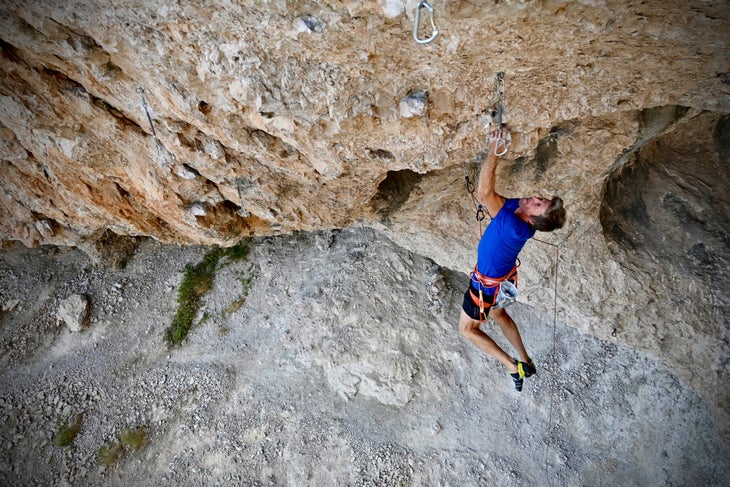
Keep expectations high for training and improvement—just as you did in your earlier years of climbing, Bechtel says. Don’t settle for less or being “good for your age.” Chuck Odette says he won’t waste time on a route that he’s certain he won’t get, but he still sets high goals. “I still think I can do some hard routes, so that’s my focus,” he says. “So, I keep working my weaknesses and work to be as strong as I can possibly be.”
For Odette, that means working on developing pure power. Although older climbers can still develop power, it takes a long time because they need more rest, and they are slower to recover from hard workouts. But rather than shy away from the process, Odette embraces it, and spends close to 90 percent of his time working power by focusing on outdoor bouldering. “I find that small gains in power lead to big gains in performance compared to working endurance, which comes easily,” he says.
Maggie Odette says that in conversations with older climbers, they’ll often use age as a reason to limit their grade expectations. “As soon as you self-identify as an older climber that can only climb a certain grade, then that is what you become,” she says.
Erbesfield-Raboutou says she’ll never let an excuse like the temperature, her skin, or her height impact her approach to climbing and, likewise, she doesn’t factor her age into her expectations.
“I don’t put a whole lot of thought into how I’m climbing for my age. I’m just a climber and it’s my passion,” says Erbesfield-Raboutou. “I put in the effort and expect the results and I don’t give in to anything.”
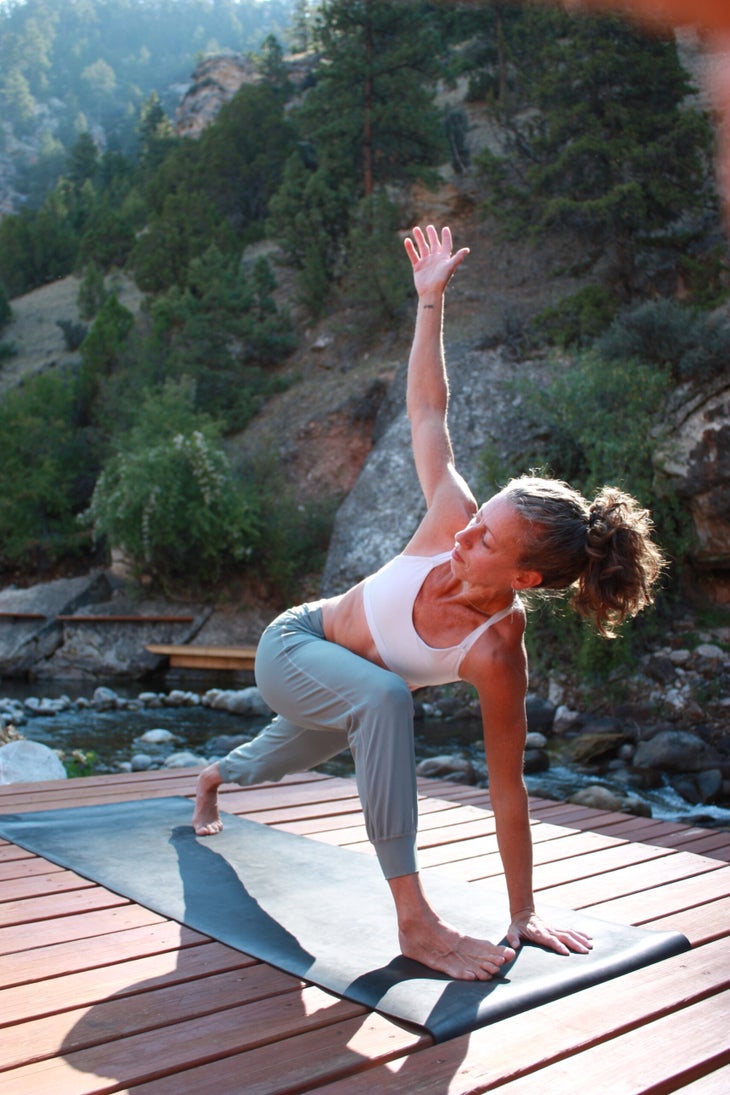
Trying hard is the only way to climb your hardest, of course—but it also ups the risk for injury. And while young bodies bounce back more quickly from injury, with more miles on the car, an injury will take longer to heal. Chuck Odette talks about calculating the risks in every activity he does and every move he makes. Rather than jumping for a hold, he’ll stick-clip up and feel the hold before he makes the move. “The number-one goal is to prevent injury,” Bechtel says. “If you can just get out and go climbing without being hurt, your performance will follow.”
To train their power, the Odettes are spending the winter at Hueco Tanks bouldering, but they are both very cautious to minimize the risk of injury. They choose their boulders carefully, will walk away from a problem if it has high injury potential, and avoid highballs unless they are 100 percent certain they are not going to fall. “If I’m thinking about getting injured, in all likelihood I’ll end up with an injury,” says Chuck Odette. “I don’t want to be afraid to try hard.”
The Odettes also make sure to rest well between project days, to rebuild their try-hard reservoirs—and their bodies. On rest days, they’ll spend an hour and half on their Ashtanga Yoga practice, eat a light but healthy diet with plenty of lean protein, eschew any intense exercise or stress on rest days, and then make sure they get a long night’s sleep. They’ve mastered the art of recovery while not being bored: Both are writing books, and Maggie works on her knitting projects. “The beauty is that you can still climb as hard, but you just need to do things differently,” says Chuck Odette.
Feagin recognizes that she needs more rest than when she was younger, but has found another way, on non-climbing days, to hone her redpointing skills: visualization. Feagin might take two days rest after a hard day climbing, but she’ll either watch a video of herself doing hard moves on her current project or visualize herself doing the moves without the video, sometimes pantomiming the sequences in front of a mirror. “When I do visualization, it is almost as good as a burn or two on my project,” Feagin says. “It helps with muscle memory.”
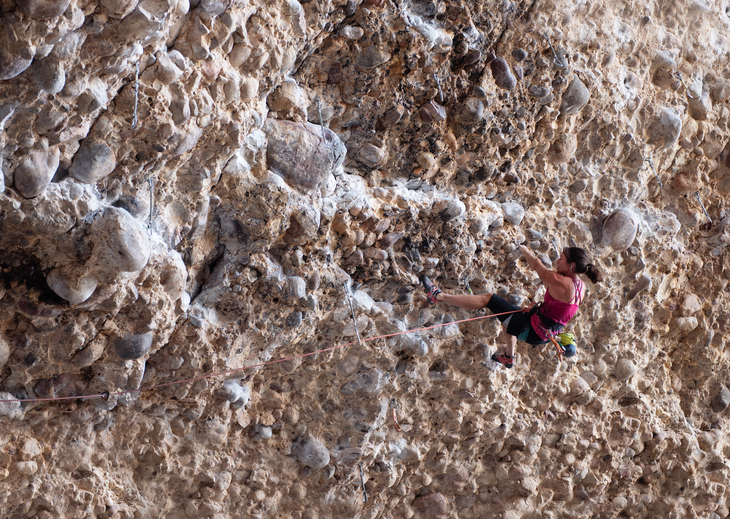
There is always something new to learn in climbing, from finessing footwork to new ways to dyno. Practicing a new climbing skill helps create new connections and pathways in the brain and eventually leads to improved performance. But the process of learning also strengthens the ability to observe, perceive, learn, and respond—important cognitive abilities for climbing any route, at any age.
Maggie Odette claims that she’s never been a powerful climber, so she’s expanding her creativity in terms of trying out tricks to tackle powerful routes. In recent years, she’s learned bicycling and the nuances of toe hooks, and a bouldering trip to Priest Draw in Northern Arizona had her practicing some of the “funkiest footwork” to get through the pocketed roofs. That same fancy footwork helped her get up T-Rex and several other steep routes. On T-Rex she used the top of her foot to lever up to a hold that stronger climbers get to with a heel hook and hard lock-off, she says: “The body mechanics on the toe instead of the heel allows me to roll up rather than having to pull up.” She also relied on highly technical kneescums on the route’s three cruxes.
Feagin, meanwhile, believes that having a strategy for crag days can help us with learning. She suggests having a plan A, B, and C. “Then find the positive in a day that turns into a C kind of day,” Feagin says. “Even learning one thing in a session can be super helpful.
It’s a strategy that came in handy when she was close to sending T-Rex. One project day, she slept badly the night before, so went to the crag armed with three plans: Plan A was to send with one hang and get back on the climb as soon as she fell, an effort that would help both her fitness and her confidence. If Plan A failed, then Plan B was to try the route with two hangs and get back on after each fall. With this approach she would still build fitness. Plan C was to learn something, anything even, such as figuring out how to get in and out of the rest before the crux more efficiently. “This doesn’t build nearly the fitness, but at least I’m making progress toward my goal,” she says.
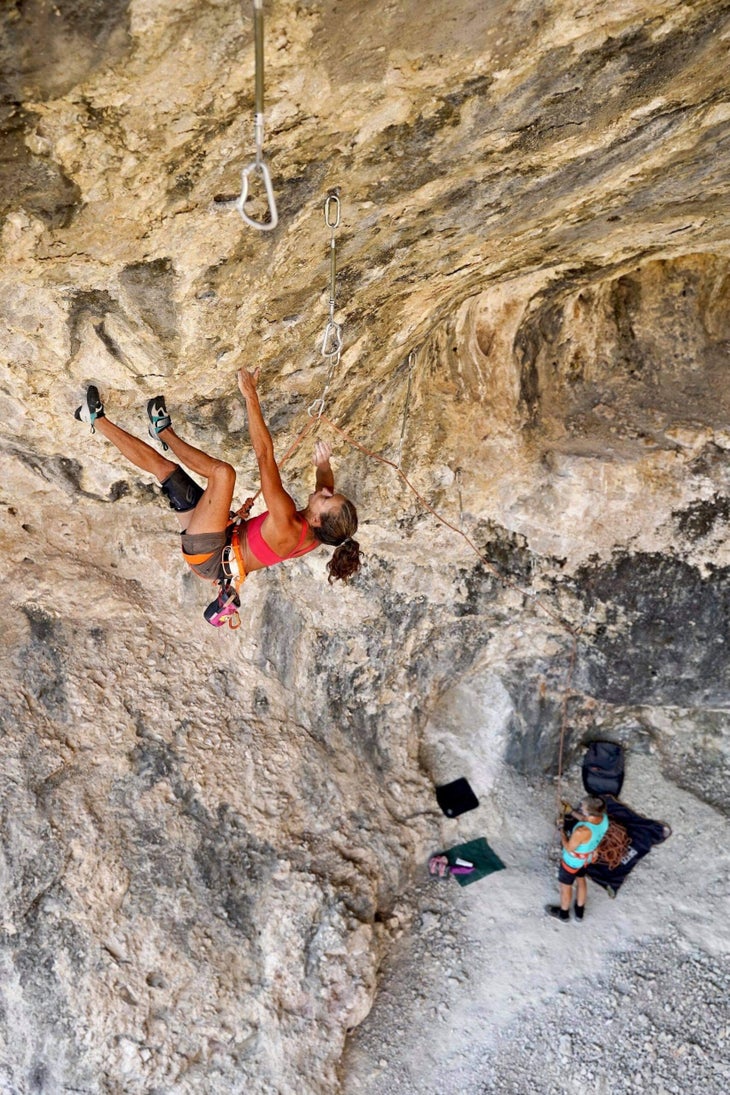
Climbers of any age would benefit from patience, but older climbers might not have much choice: Climbs can take longer to redpoint and rest days need to be more frequent.
Maggie Odette recognizes that she’s always been patient, and it is probably her greatest strength. To get her hardest routes has often taken her months, if not a couple of seasons. “I never think if I can’t do it by the tenth time, then I’ll never be able to get it,” she says. “That type of lack of patience would be a limitation.”
Chuck Odette states that he had to learn patience to be able to tick harder routes. When he was younger, he could rush into projects and fling himself at them; the harder he tried, the more gains he made. Now, though, he’s forced to take good rests. “If you’re not patient with age, then you’re not going to progress,” he says. “And I’m so driven to improve.”
T-Rex demanded patience, as well as power, from Chuck Odette. After a late-season attempt on it in summer 2018 at age 62, he invested two entire five-month long seasons training on the route, weeding out inefficiencies, finding additional tricks, and practicing rests. It’s a long route, with approximately 120 feet of mostly horizontal climbing, and he broke it down into sections, with the goal of climbing each section as efficiently as possible, pushing high-points and low-points until it eventually all came together in a single push. Some days when conditions were against him, he’d simply work separate sections to try and discover new, more efficient sequences. Other days, he simply felt physically or mentally not up to the task, but overall, he was progressing in the right direction. “I was continually preparing myself for the day when my physical and mental states came together, and coincided with near-perfect conditions,” he says.
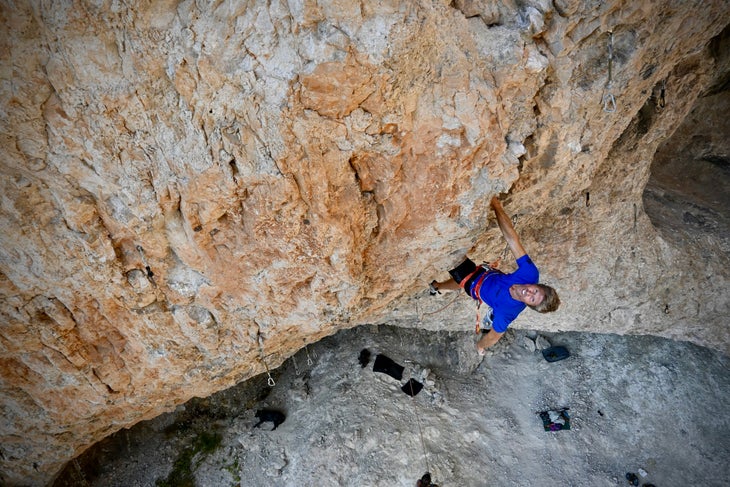
While aging might mean declining muscle mass and an ongoing battle to maintain strength, for many aging athletes, especially those in retirement from their careers and who have free time to travel and climb, it also brings its own advantages. Growing older can mean fewer responsibilities and financial concerns, and, most importantly, more time for climbing, general fitness, and resting.
The Odettes, who both took early retirement, have embraced these advantages. They know their strengths and weaknesses, and that allows them to select projects that suit their strengths and training tracks that target their weaknesses, says Maggie Odette. They also recognize that aging has brought with it wisdom.
That wisdom helps them train smart, avoid injury, be strategic in their projecting and patiently play the long game. Chuck points to the typical day of a young climber’s life, which involves racing around to get ready, often forgetting to pack food, water, their harness, then getting in their vehicle, racing to the crag, sprinting to the wall, forgoing warm-ups, and lining up to throw themselves at the same route everyone else is attempting. “As an older, hopefully wiser, climber, I enjoy taking my time, embracing the methodical process, and learning the intricacies of the movement so that the eventual redpoint flows like a well-rehearsed gymnastic routine,” he says.
More time in the climbing game also builds a depth of experience, says Feagin. Feagin spent years as a professional climber when she was younger, with a focus on traditional and alpine climbing. It’s experience that has fed into her current passion for sport climbing and projecting. “I feel like I can not only read routes really well but that my body just knows how to do the most efficient sequence,” Feagin says.
And finally, perhaps the only rule of climbing is to continue to make choices that satisfy your soul, says Erbesfield-Raboutou. And that applies whatever age you are, she says. “I almost always have a project on hand because that’s who I am. I like to challenge myself to do things that don’t come easily,” says Erbesfield-Raboutou. “And that hasn’t changed with age—that’s just who I am.”
Chuck Odette admits that he’d probably might fare better on more vertical climbs, rather than the horizontal physical roofs that he tends to project. “But those steep projects just inspire me,” he says.
Maggie Odette states that she and Chuck have realized there’s no need for them to be climbing all-arounders. While vertical rock or slabs might help them gain skills, those techniques aren’t going to help them on the steep climbing that they both love. “We only have so much time left, so why spend it on rock climbs we don’t love?” she says.
Feagin agrees that it is important to set goals that are inspiring, at any age. “There is too much work involved to do something I’m not passionate about,” she says.
The key for all of these climbers has been to continue enjoying climbing, which is often a shortcut to either maintaining your level or moving up the grades. This also means knowing what type of climber you are, and embracing that choice. Some climbers like to do hard redpoints, some climb to get outside and have fun with friends, some relish taking risks, and others are happy toproping. To climb, or not to climb, is a choice, and climbing ideally fits into your life in a way that suits you, says Erbesfield-Raboutou. “What I choose for my climbing doesn’t have to be what you choose for yours,” she says. “It doesn’t have to be 110 percent for everybody.”
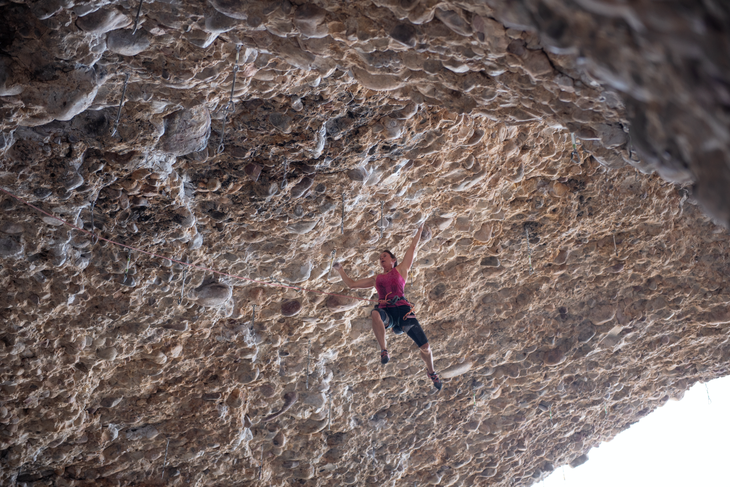
Have high expectations, try hard and smart, keep learning, practice patience, exploit your assets, and satisfy your soul—these aren’t skills that only aging climbers should acquire; these are the essential skills of being a climber, ones that will help you keep improving and get the most out of climbing, whatever your age.
But older climbers might have an edge in that respect. The longer you’ve been a climber, the more likely you are to have stumbled on these skills, but more importantly, the more you know how to satisfy your climber’s soul. Aging lets you bring a clarity of mind and focus to the craft, so that even though physical gains become more challenging, mental gains can still be won. And most of all, the perspective that comes with aging frees up climbers to simply enjoy climbing for the soul-enriching activity it is.
Climbing rocks is pretty meaningless, almost silly, says Chuck Odette. He equates it to Tibetan Buddhist sand art, in which Buddhists create elaborate mandalas out of colored sand, only for the wind to blow them away. In climbing, the reward is self-defined, and measured in terms of what you get out of it, he says. “We have these amazing climbing days and breakthrough days where we feel like we’re floating,” Odette says. But then another day comes, and he and Maggie will turn their attention to the next goal.
“It’s just fun,” he says. “It’s fun to keep doing that.”
Jane Palmer is a science journalist who lives and works in Eldorado Springs, Colorado and plays in Eldorado Canyon, whenever she gets a chance.
The post Six Ways to Age-Proof Your Mental Game appeared first on Climbing.